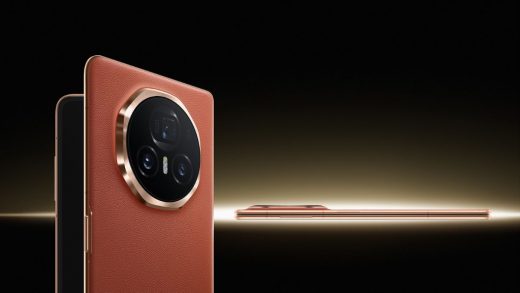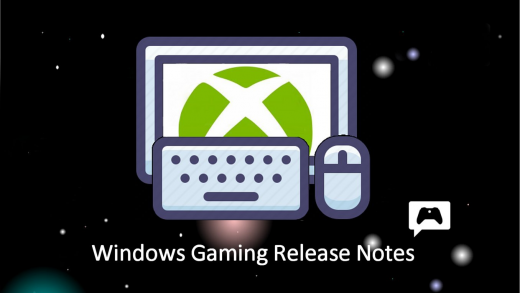
The Motorola Edge 40 is the latest entrant in the list of smartphones under Rs. 30,000 in India, which currently seems to be the industry’s hot segment as it has witnessed quite a number of new launches lately. It is also quite crowded with the likes of the Redmi Note 12 Pro+ 5G (Review), iQoo Neo 7 (Review) and the recently-launched Poco F5 5G (Review). While most smartphones around this price aim to be the jack of all trades, a lot of them prioritise performance. The Motorola Edge 40 on the other hand distinguishes itself with its sleek design and some flagship-killer specifications.
Launched as a successor to last year’s Motorola Edge 30 (Review), the Edge 40 packs some promising hardware for the price. With all that is on offer, does the Motorola Edge 40 have an actual edge over the competition? Here is our full review to help you find out.
Motorola Edge 40 price in India
Motorola has launched the Edge 40 in a single 8GB RAM + 256GB storage configuration in India. The phone is priced at Rs. 29,999. It is available in three colour options — Nebula Green, Eclipse Black and Lunar Blue. The former two variants have a vegan leather rear panel, whereas the latter option has a PMMA acrylic back.
Motorola Edge 40 design and display
Design is often subjective but what many users would appreciate is a phone which offers a premium in-hand feel. The Motorola Edge 40 certainly checks the box here in my opinion with its faux-leather rear panel. The company sent us the Nebula Green colour, which certainly seems to be the shade of the season. This is perhaps one of my favourite shades of green after the Lime Green colour of the OnePlus Nord CE 3 Lite 5G (Review) and the Lime colour of the Samsung Galaxy A34 5G (Review). With the Edge 40, it is not just the colour that’s appealing but the in-hand feel as well.
![]()
Motorola Edge 40 is only 7.58mm thick
The textured surface, coupled with the curved edges of the phone and the lightweight build (7.58mm thick, 171g weight) add to the excellent in-hand feel. Moreover, you also get a metal frame and an IP68 rating for water and dust resistance, which is not common in phones under Rs. 30,000.
On the front of the Motorola Edge 40, there is a 6.6-inch curved-edge pOLED display with very thin bezels at the top and bottom, which helps offer an immersive viewing experience. However, the extreme curvature on the sides of the display and the slim form factor led to many accidental touches, creating a ghost-touch-like effect while playing games. I would have preferred a less pronounced curvature such as the one on the Realme 10 Pro+ 5G (Review).
![]()
Motorola Edge 40 has a fairly thin chin bezel
The full-HD+ resolution display offers good viewing angles but colours are quite saturated by default for that vivid experience. You can get more natural, warmer tones by switching to the ‘Natural’ setting in the display settings. The Motorola Edge 40 also has a HDR10+ playback certification but apps such as Netflix and YouTube weren’t able to detect it when I tested it. The in-display fingerprint sensor works well and is also positioned appropriately under the display, making it comfortable to use.
The Edge 40 is currently the only smartphone under Rs. 30,000 in India to offer a 144Hz refresh rate display. However, it seems like many apps are yet to take advantage of this as in my experience, the display was mostly running between 60Hz and 120Hz.
Motorola Edge 40 specifications and software
The Motorola Edge 40 packs a new MediaTek Dimensity 8020 SoC, which is essentially a tweaked version of the Dimensity 1100 SoC. It comes with 8GB of LPDDR4X RAM with 256GB of UFS 3.1 storage. There is a 4,400mAh battery with support for 68W TurboPower fast charging. Notably, there is also 15W wireless charging support, which is unheard of in this segment.
In terms of software, the Motorola Edge 40 runs on the latest Android 13-based MyUX skin. The custom Motorola skin is among the very few Android skins out there to offer a clean software experience while adding several features on top. The Edge 40 does not feature any third-party bloatware. It continues to offer support for several customisation and personalisation options, such as changing icons, wallpapers, fonts, sound, etc.
Motorola also offers support for various gestures that can trigger certain tasks, such as double tapping the rear panel to trigger customised actions, twisting the wrist twice to open the camera, turning the torch on or off with two karate chop motions, etc.
![]()
Motorola Edge 40’s user interface is quite clean and smooth
The company is also offering Lenovo’s ThinkShield security and privacy features within the Moto Secure app. Users can check all the permissions along with privacy indicators for camera, microphone and location access within the app.
Motorola has promised to provide two major Android updates, and security support for three years for the Edge 40.
Motorola Edge 40 performance and battery life
The Dimensity 8020 SoC in the Motorola Edge 40 is quite powerful for its segment. Be it routine tasks such as switching between apps, scrolling through social media, etc, or playing games, the device offered a smooth experience in most cases. In BGMI, I was able to play with up to ‘Ultra’ framerate and HDR graphics. Initially, I noticed some stutters while playing at the highest settings, however, after a couple of rounds, the performance was quite smooth. Call of Duty: Mobile on the other hand ran smoothly.
I did notice the phone getting slightly warm around the camera module after about 45 minutes of gameplay, which seemed normal. In fact, considering how slim the phone is, I would give a bonus point to Motorola for the good heat dissipation that ensured sustained performance during extended gaming sessions.
The Motorola Edge 40 scored 7,64,083 points in AnTuTu (v10) which is behind the current segment leader, the Poco F5, which scored 1,094,798 points. In Geekbench 6, the phone scored 1,103 and 3,588 points in the single-core and multi-core tests.
![]()
Motorola Edge 40 comes with a 68W charger in the box
In terms of battery life, the Motorola Edge 40 can last a full day with medium usage and no gaming. However, play games for an hour or so and you might need to charge the device by the end of the day. The Edge 40, on average, gave me 7 hours, 30 minutes of screen-on time. In our HD video loop test, the phone lasted for 15 hours, 31 minutes, which is just above average.
Fortunately, you get 68W fast charging and during our testing, it consistently charged the Edge 40 from zero to 75 percent in 30 minutes. You also get 15W wireless charging, which can come in handy if you have wireless chargers at home or at work.
Motorola Edge 40 cameras
The Motorola Edge 40 features a dual-camera setup with a 50-megapixel f/1.47 primary camera with support for optical image stabilisation (OIS). There is also a 13-megapixel sensor with an ultra-wide lens that can shoot macro images as well. For selfies, the Edge 40 features a 32-megapixel front camera.
The primary camera captures good details, but at times sharpens the image a bit too much. Also, the colours are a bit too saturated in order to offer a vibrant look. While the software tries to improve the dynamic range in the processing, it can be a hit or miss. Thanks to the wide aperture, the primary camera offers a shallow depth of field when shooting close-up subjects. In low light, there is a good balance of details and colours with well-exposed shadows and controlled highlights.
Motorola Edge 40 primary camera samples (tap to see full size)
The ultra-wide camera is also quite good for the price. There is distortion around the edges but that’s quite common for ultra-wide camera lenses. The ultra-wide sensor also supports autofocus, which means that you can get very close to a subject to shoot high-resolution macro shots. This certainly is a much better implementation than the 2-megapixel macro sensors that we see in many smartphones across different price points. That being said, the macro images were not as colour accurate as they could have been.
Motorola Edge 40 ultra-wide, macro camera samples (tap to see full size)
The rear main camera can shoot portrait images at 24mm, 35mm and 50mm. While subject segmentation is accurate in most cases, the blur looks unnatural and the skin tones looked too soft when capturing human subjects.
Motorola Edge 40 main camera samples (Top to bottom: 24mm, 35mm, 50mm portrait modes)
The front camera fails to get skin tones right most of the time. I could see a slight red hue in the selfies clicked by the Motorola Edge 40. Also, while portrait mode offers a creamy background blur, it also blurred out parts of my face.
Front camera sample shot on Motorola Edge 40 (tap to see full size)
In terms of video recording, the Motorola Edge 40 can shoot up to 4K 30fps or 1080p 60fps. I liked the overall colour reproduction and dynamic range performance of the rear and front cameras. The rear camera comes with OIS, which does a decent job. There is also a Horizon lock feature, which locks the orientation of the frame even when you flip the phone upside down while recording 1080p videos.
Verdict
The Motorola Edge 40 packs some capable hardware wrapped in a curvy, sleek body that screams premium from a distance. The handset offers an excellent in-hand feel, great multimedia experience and relatively good performance. The software too, is quite feature-rich and clean.
The Edge 40 also delivers some features which are unheard of in the segment such as an IP68 rating, a 144Hz pOLED curved-edge display, and wireless charging.
However, the cameras definitely need more work. While the hardware and features seem solid on paper, Motorola needs to work on optimising them further for that competitive edge.
If you want an all-rounder smartphone under Rs. 30,000 and are willing to compromise a bit on the cameras, the the Motorola Edge 40 can be considered. We feel that the Redmi Note 12 Pro+ 5G (Review) and the Samsung Galaxy A34 5G (Review) offer slightly better camera performance. For sheer raw processing power, you can certainly consider the Poco F5 (Review).


